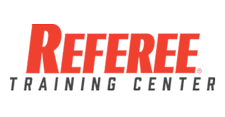By Jerry Grunska
If you coast, you’re toast. We often use expressions like that to remind officials that they should continually seek ways to improve themselves. The same idea can be applied to associations. Are we treading water? Have we become stodgy? Are we overlooking or ignoring ways to advance our purpose? Do members have ideas useful that we haven’t tried? Are there some blind spots in our policies and practices? Can we do something about these questions when the sport(s) we serve is/are not in season?
Let’s take that last question and say that the first thing we want to do is review the season. We’ve got two constituents: schools (and possibly recreation centers) and members. What has worked smoothly?
Most of us operate on the internet nowadays, handling assignments via email. Communication with members about association issues often goes that way too. An end-of-season review should tap the members’ points of satisfaction or areas of contention. In some cases a survey, with check-off boxes might be useful, but my recommendation would be to present an open-ended query and see which major factors emerge. Give us an overview of satisfactions this year, explaining which things worked well. Then describe which things did not go well, and suggest ways they could have been remedied — or ways that could lead to satisfactory results in the future.
There is a problem with such requests, obviously, and that is an email response will not be anonymous. Maybe there is indeed an issue that would best be handled without people having to identify themselves, a well-known sore point, perhaps. In that case, one sure way to get candid replies is to hand out a questionnaire at the final meeting.
Maybe officers on the board believe that particular issues, items already identified, need to be aired in an end-of-season survey. For example, we’ve had a traditional formal season-ending banquet with spouses and awards (maybe comical citations). Do we want to continue this? Are there ways to refocus it or make it more meaningful for members?
Perhaps there were some glitches in the assigning process. It would be useful for a board to seek ways of improvement. When members are surveyed, they should be encouraged to offer solutions for perceived problems. This serves two purposes. On the one hand it encourages people to put their complaints in writing. In addition, by asking for suggestions, it places the onus on members for association betterment, and it will assure the members a voice.
Of course, when sifting through the replies board members must winnow the serious issues from the frivolous, and then they must be stirred to action. If you dismiss contentious issues out-of-hand, you’ll lose the respect of members.
Another topic worth surveying would be training procedures. Here are several ways that associations handle training. One way is to have an open agenda: “Anyone have a peculiar situation in last week’s games?” I’ll say right off the bat, if that is the only way to extract topics for discussion, it is pretty feeble.
Still another way for instructional processes, used exclusively many years ago in associations I attended, was to have a rules guru stand up and expound on particular phases of game regulations, explaining how rules applications come into play during competition. This practice can be revelatory if you have a genuine marvel for an interpreter — someone with an interesting delivery style and a clear analytic ability. But it shortchanges audiences to some degree because it may bypass attendees’ involvement.
Presently many associations use video, and several people break them down into discrete samples of officiating behavior. They select items in categories and develop power point presentations for finite instructional purposes. Have you arrived at that point yet? It might be a reasonable goal for a board of directors to shoot for.
So training procedures are a good thing for an association board to address during the offseason. Here are some other questions for board members to consider:
- What’s the best way for us to recruit new members?
- Should we have a formal mentor program for up-and-coming officials?
- Are coaches and athletic directors satisfied with the way we operate? (Here’s an opportunity for some follow-up responses by phone or email.)
- Do we need to review our communications with the state office? How are we strong in this regard and where are our shortcomings?
- Are some game issues in need of policy statements, such as asking for better dressing facilities or requesting security escorts at the end of games?
- Should we set up a preseason clinic, inviting another association members as presenters?
If you’re a conscientious board, you can’t bury your head in the sand and assume that there are no issues that need addressing. An active board earns the respect of its people. Without asking for feedback you’ll have no laurels to rest on. Instead, you snooze, you lose.
Jerry Grunska, a retired official and educator, is a frequent contributor to Referee. He lives in Evergreen, Colo.





